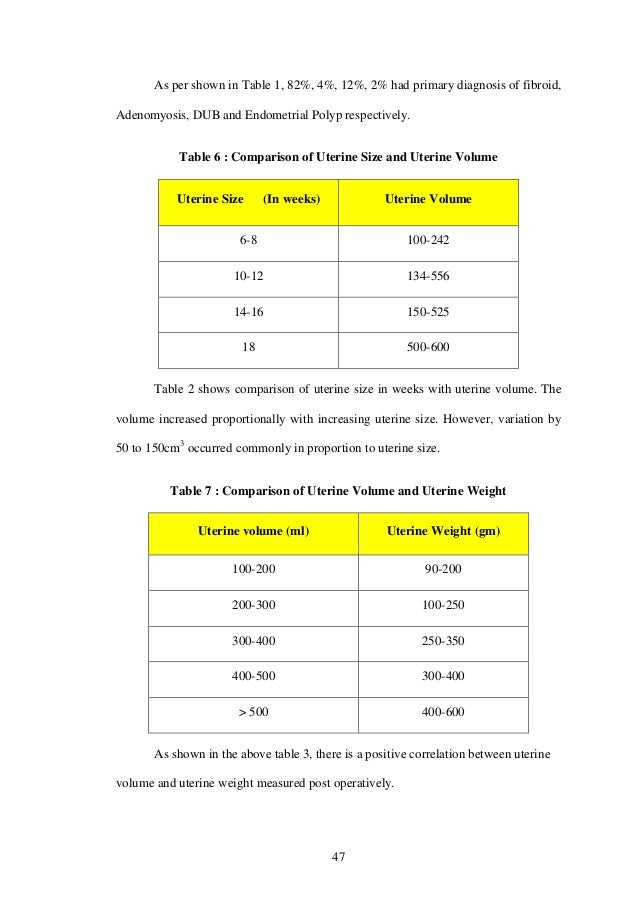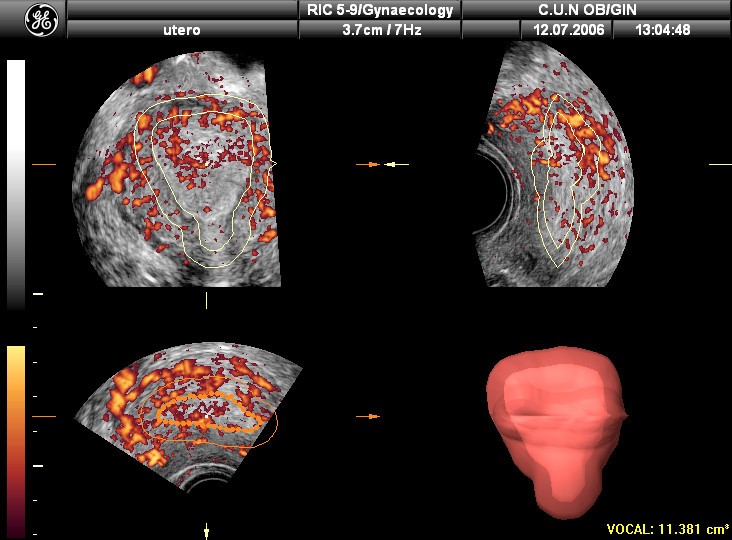
Its upper limit is 35 U/mL in pre and post-menopausal patients. specifically isolated the monoclonal antibody OC125 in cancerous ovarian tissue compared to healthy ovarian tissue. It has been used in the early 1980’s when Bast et al. This biomarker is most often used for ovarian lesions. Only the values of some cited articles are referenced in order to lighten the table and make it readable.Ĭarbohydrate Antigen 125 (CA 125), sometimes named as Cancer Antigen 125 or Tumor Antigen 125, is a mucin-type glycoprotein, produced by the MUC16 gene, and associated with the cellular membrane. The sensitivity, specificity, positive and negative predictive values of these tools have been collated in Table 1 for CA125 and HE4 and Table 2 for RMI and ROMA algorithms.
#Ovarian volume calculator update#
Our study intends to provide a comprehensive update for ovarian cancer diagnosis using biomarkers (HE4 and CA125) and algorithms (RMI and ROMA). CNGOF also concluded that complementary studies should be necessary before using HE4 on a routine basis (Grade B). HE4 was found to be a reliable biological marker for detecting ovarian cancer (level of evidence 1) and ROMA algorithm was more sensitive but less specific than HE4 alone (LE2) for the French National College of Obstetricians and Gynaecologists (CNGOF). For this reason, algorithms, RMI (Risk of Malignancy Index) and ROMA (Risk of Ovarian Malignancy Algorithm), were developed in an attempt to improve the inherent characteristics of these biomarkers. Although the specificity of these markers is rather reliable, they are not very sensitive. This biomarker is reported to be overexpressed in ovarian cancer. Other biomarkers have been developed in order to improve specificity for ovarian carcinomas, such as the Human Epididymis Protein 4 (HE4). Increased CA125 levels are also reported in other physiological or pathological conditions, such as menstruation, pregnancy, endometriosis and inflammatory diseases of the peritoneum. In cases of ovarian cancer, serum CA125 level may be elevated, but this marker has a low sensitivity in the early stages of ovarian cancer. The Carbohydrate Antigen 125 (CA125) was first described in the early 1980’s. Ĭoncerning laboratory exams, several tumor biomarkers have been evaluated. Exams are therefore needed which must be prioritized in order to advise the patient (monitoring, treatment or survey) according to the lesion, and first and foremost to the clinical history of the patient. It seems essential to differentiate early malignant ovarian tumors to benign ovarian tumors. More than 90% of benign tumors are found in premenopausal patients who have been operated on, whereas in postmenopausal patients only 60% of tumors are benign. The prognosis is closely related to the stage at diagnosis: survival rate of > 70% after 5 years for stage I or II, survival rates between 20 and 40% for stage III or IV. The prognosis for ovarian cancer remains poor overall, with a 46% 5-year survival rate. In more than 70% of cases, it is diagnosed at an advanced phase. Ovarian cancer is the 5th worldwide leading cause of death of women due to cancer. To date, the most efficient biological diagnostic tool to diagnose ovarian cancer is the combination of CA125 and HE4. The specificity of ROMA is lower than HE4 (84% compared to 94%). While the specificity of RMI sometimes reaches 92%, the rather low AUC of 0.86 does not make it the best diagnostic tool.

#Ovarian volume calculator plus#
Furthermore, this combined measure of CA125 can correct the variations in HE4 which are due to smoking or contraception combining estrogen plus progestin. The combined measures of CA125 and HE4 have proved to be highly efficient with an area under the curve (AUC) of up to 0.96. Its specificity is 94% and its level is not affected by endometriosis cysts. The level of HE4 is overexpressed in ovarian tumors. Serum CA125 assay has low sensitivity in the early stages and can be increased in certain conditions such as menstruation or endometriosis. Our study aims to give an update on the biological markers for diagnosing ovarian cancer, specifically HE4, CA 125, RMI and ROMA algorithms.

In more than 70% of cases, it is only diagnosed at an advanced stage. Ovarian cancer is the 5th leading cause of death for women with cancer worldwide.


 0 kommentar(er)
0 kommentar(er)
